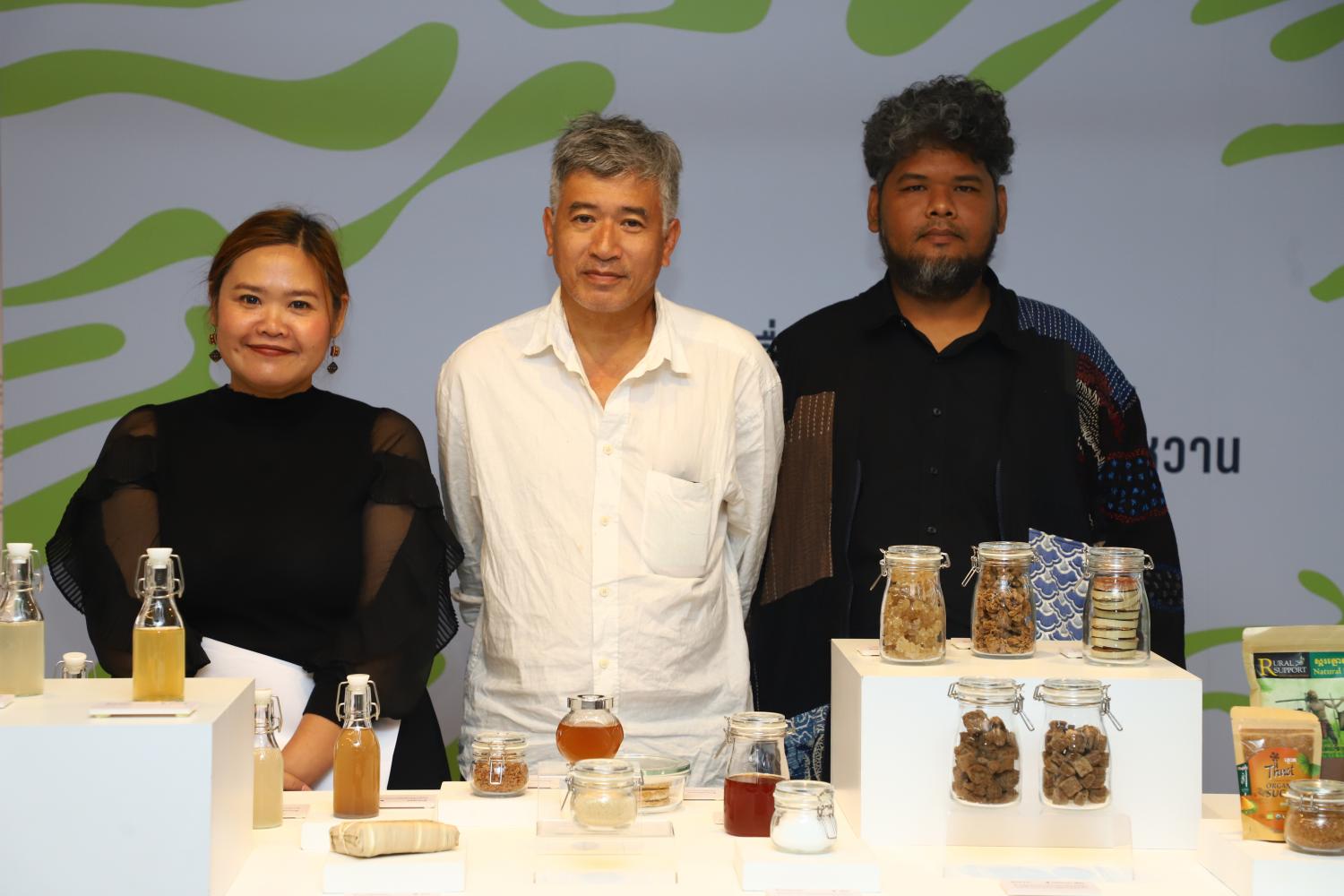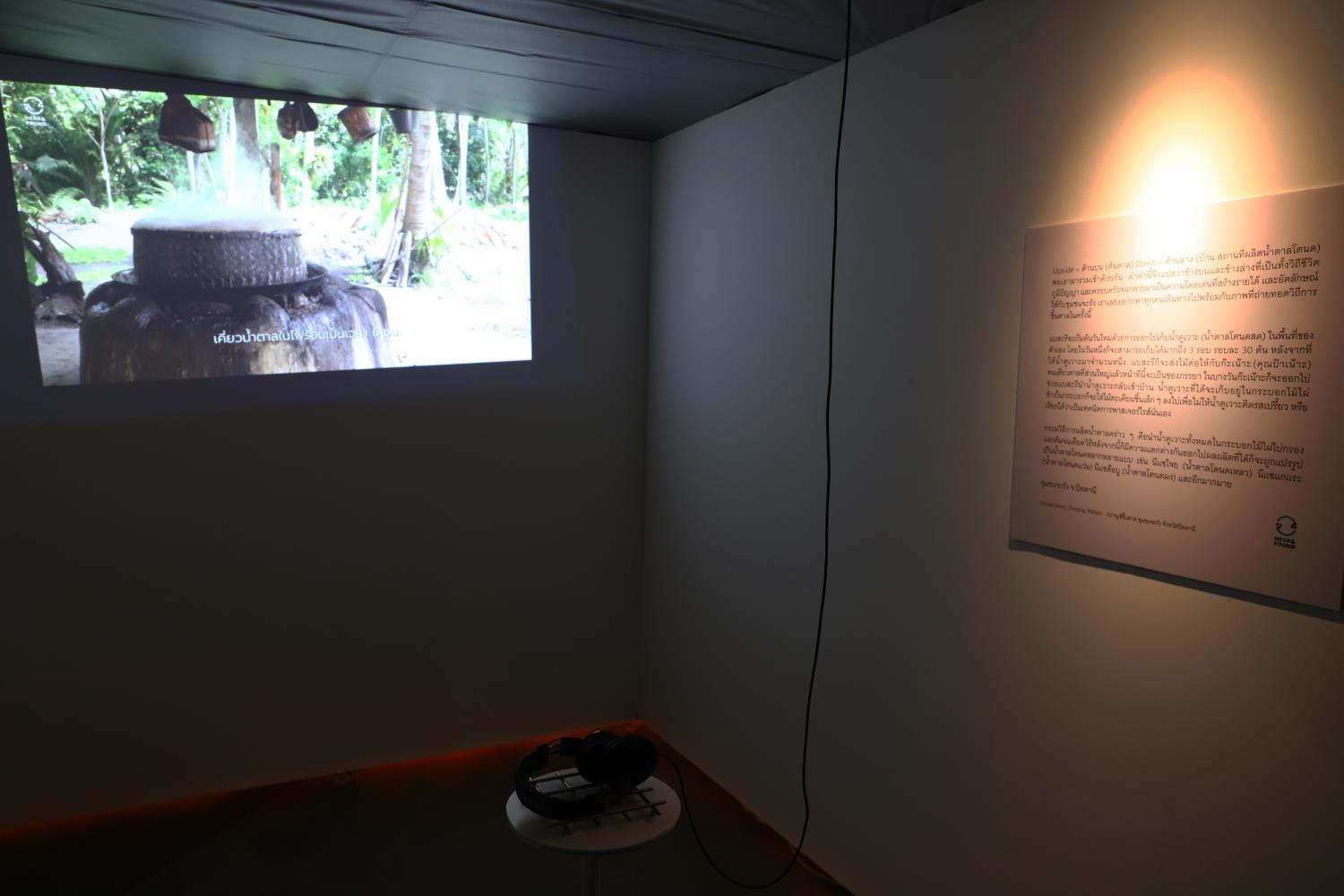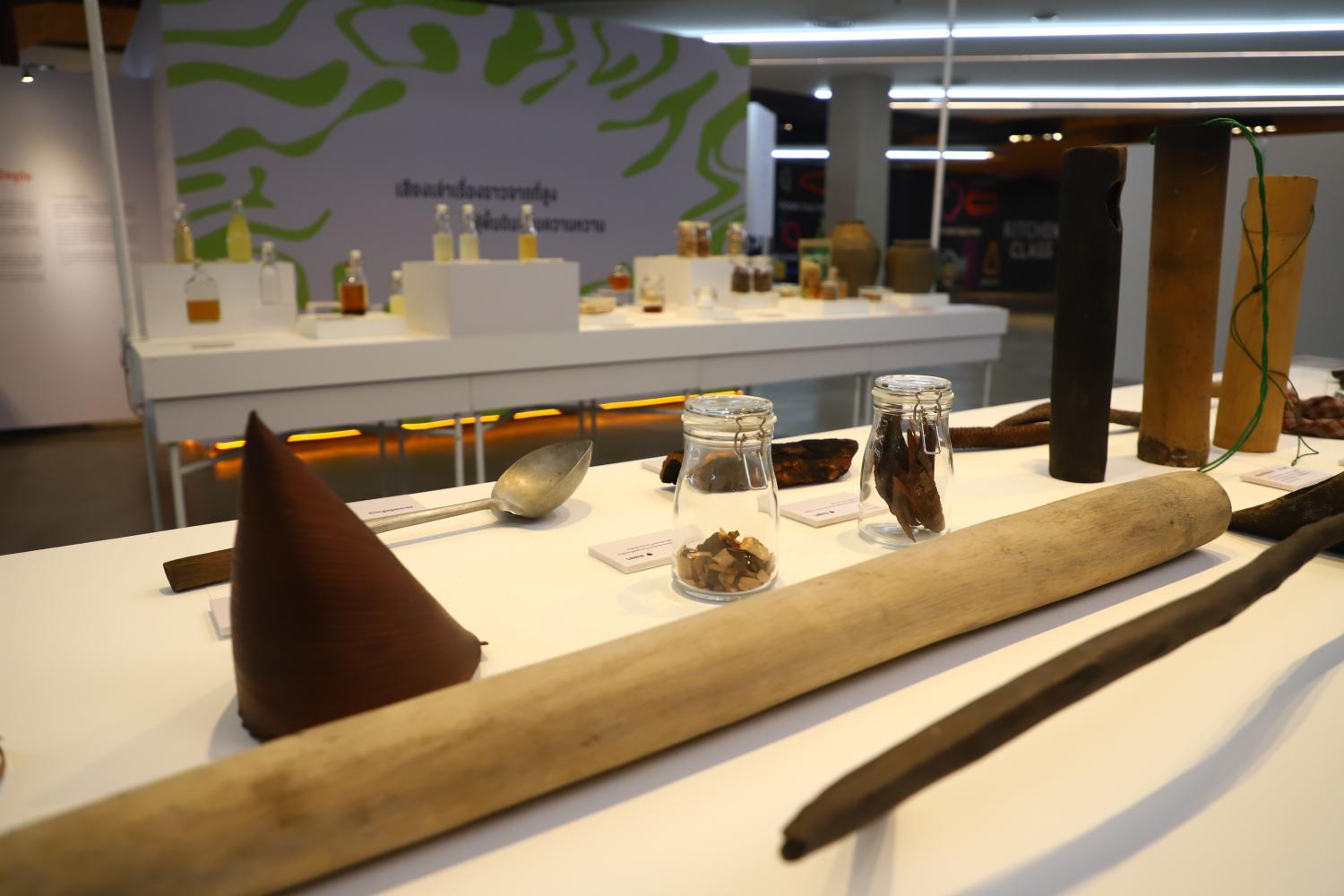Since Phetchaburi and Songkhla have an abundance of sugar palm trees, people recognise these two provinces for their palm sugar products. When local ingredient expert Anusorn Tipayanon and community architect Jantrarat Jantaratippalukit visited Pattani, they were surprised to see the palm sugar production process there. After trying wak or krachae (liquor made from palm sugar) in Panare, Anusorn came up with the idea to create the exhibition "Soul/Sweet" which depicts products made from palm sugar.

"Most people do not know that wak is a liquor served to customers at restaurants down in the South in places like Phatthalung and upper areas of Songkhla. Thai people feel cool learning about French and Australian wines, but they do not know about wak or krachae. While krachae in Phetchaburi has a sweet taste, in Sukhothai it has a smoky aroma. In Thailand there are wine masters, but there are no specialists in wak and krachae. I think Thai people should take more interest in local ingredients," said Anusorn.
Anusorn and Jantrarat teamed up with Pariwat Wichianchot, the founder of Taste From The Root, a social enterprise aimed at supporting palm sugar planters, to create "Soul/Sweet" currently showing at TCDC Commons in Seacon Square Srinakarin. The exhibition is divided into five zones -- Sugar Is Sweet, Bitter And Sour; Recordings Of The Production Of Sweetness From Above To Below; Local Ingredients And Tools; The Journey Of Palm Sugar; and Hidden Sweet.
The Sugar Is Sweet, Bitter And Sour area explains how the taste of palm sugar changes from sweet to bitter to sour. First, a palm climber collects sweet sap from the flower buds on the palm sugar tree and stores it in bamboo containers. After the sap is left to ferment in the container for four to seven days, it becomes wak or krachae, which is a type of sugar liquor with a bitter taste. If the liquor is left to continue to ferment for three months, the yeast will give it a sour taste.


"Vinegar is the final result of palm sugar fermentation. Most people in the South use homemade palm sugar vinegar as a food ingredient. Its sour taste is mild and mellow, not a sharp one. This vinegar contains probiotics which promote a healthy digestive system. Thai people currently like to consume apple cider vinegar. The government should support this natural vinegar from palm sugar to be in the market more," said Anusorn.
In addition to information about sweet, bitter and sour tastes, the first zone of the exhibition displays portraits and a video of the people involved in making palm sugar products, including palm sugar climbers and artisans. Pariwat explained that they wanted to showcase these individuals because they play an important role in the palm sugar industry.
"We want farmers to feel proud of themselves and we want other people to know that they are skilled craftsmen of palm sugar products. Despite providing sweetness to people, these climbers and artisans have a bitter life. During the eight-month palm sugar season, climbers cannot leave their trees for long periods. They must squeeze the flower buds every day for 15 consecutive days to collect the sweet sap. If they miss a day, they have to start over. I heard that one palm climber even had to miss his best friend's funeral because there was no one to take his place. In Sukhothai, there are only 10 palm climbers, and each person is responsible for his own trees," said Pariwat.While Jantrarat was gathering information for the exhibition, she discovered that several factors can cause a negative impact on the palm sugar industry.

"Firstly, due to the popularity of sugarcane, sugar from palm trees is not widely used. Traditional recipes that require palm sugar have changed. Secondly, most palm climbers are over 60 years old and younger generations are not interested in this profession. Once these palm climbers retire or pass away, there will be no one to carry on their work. Lastly, more rural areas have developed into urban areas, so the number of palm tree plantations has reduced," said Jantrarat.
Climbing palm trees is a dangerous job, and some climbers have died from falling. Anusorn said that the Thai government wants people to make craft food as Japanese people do, but there are not enough young people interested in this kind of work.
"If there are no more palm climbers, people will have to purchase manufactured sugar instead of homemade sugar. When we were in Cambodia to research palm sugar, we met a climber who told us that the Cambodian government provides financial support to palm climbers. Unlike Thailand, it is legal to make and sell home-made palm sugar liquor in Cambodia. In the past, Thai people used wak to ferment meat and season food. We should bring back wak and kachae as ingredients again. This may help palm sugar artisans to carry on their craft and livelihood," said Anusorn.


In the second zone, the video Upside Down Charang Pattani created by the sound designers Hear & Found follows palm climbers in the Charang community in Pattani as they climb up to collect the sweet sap from flower buds.
The third zone showcases local ingredients and tools used to make palm sugar, including knives, knife cases, jars, and wooden sticks used for squeezing the flower buds.
"While I was in Pattani, I discovered various types of sugars that people may not be familiar with. Some of them are displayed in this zone. Nee sae sa ka are sugar crystals stored in a jar for over a year. Nee sae put ae is a sheet of palm sugar that has been simmered until it sticks to the pan. It has a bitter taste like chocolate," said Jantrarat.
The fourth zone displays two routes by which palm sugar was brought to Thailand. The first route involves cargo ships and the spread of Hinduism and Buddhism through the ships of religious ambassadors. The other route on land came from Cambodia and travelled through the south of Isan. As the exhibition curator, Anusorn said he identified the maps as "maps from experience" which were created based on research. The team also hopes that visitors will help to add other locations of palm sugar trees and communities.
Anusorn hopes that the exhibition will help visitors realise that fermented palm sugar, palm sugar alcohol and palm sugar vinegar can be options.

"The main target audience of the exhibition is chefs and people in the sugar industry, as I hope they will discover other alternatives for ingredients and materials. I also hope the younger generation will visit the exhibition to learn about artisans. Many food festivals are organised several times a year, but not many events focus on people who create the ingredients. The rice industry used to be dominated by manufactured rice, but now, there are many types of rice in the market. The rice community is growing and we wonder if the same will happen with sugar," said Anusorn.
"Thai people recognise and admire that Japanese create their crafts with excellent attention to detail. Some wonder why Thais do not have the same level of detailed craftsmanship. It is because not many people see our detailed products. If more people become interested in Thai craftsmanship, I would consider it a success," said Pariwat.
"I want to create a list of palm climbers. I really want to find out how many climbers we have left, so we can create a future plan according to the resources," said Jantrarat.
"Soul/Sweet" runs at TCDC Commons, Seacon Square Srinakarin, until April 30. Admission is free. For more information, visit facebook.com/COMMONSSeaconSquare.











